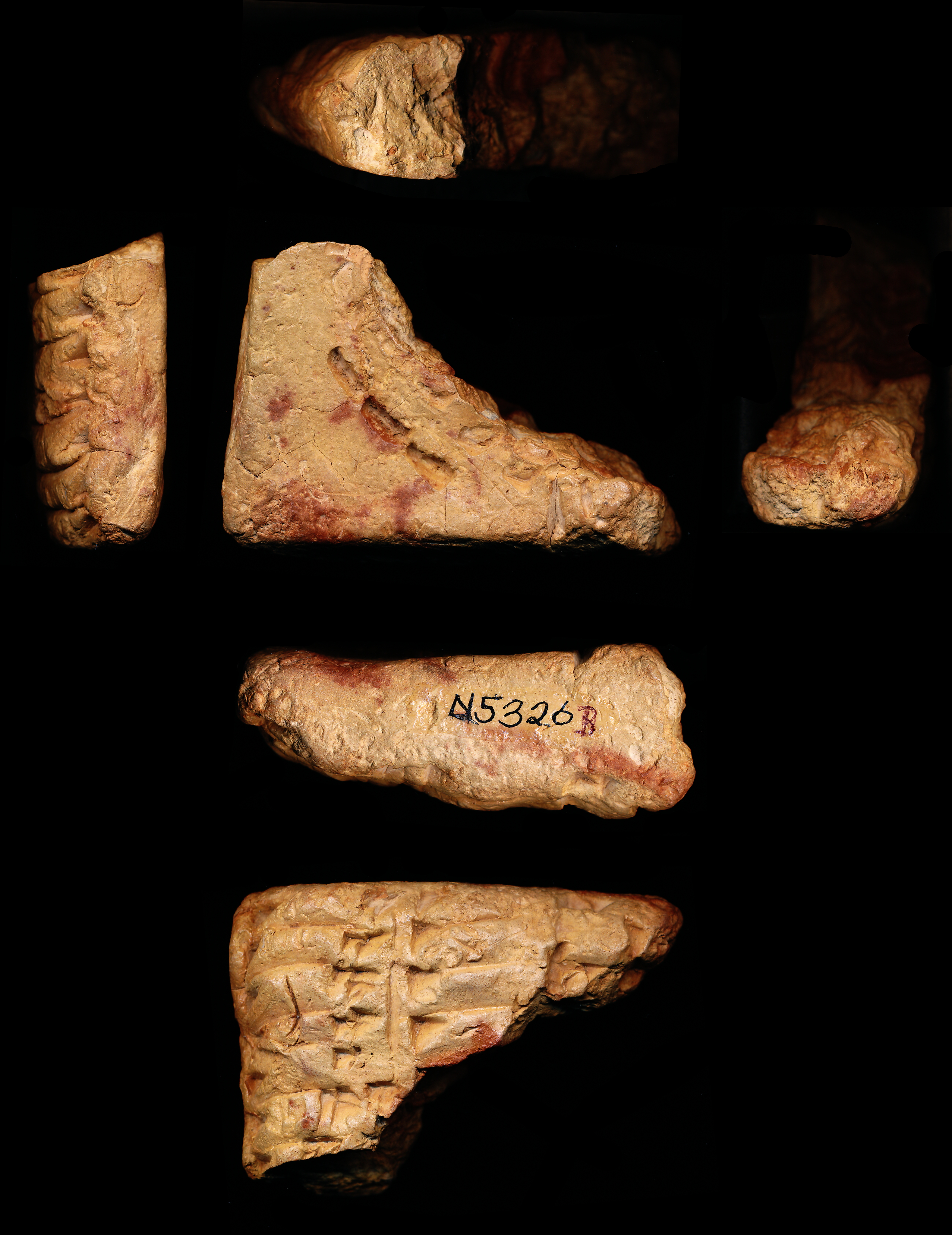Amid the ruins of Nippur is a house, inspiringly named “House F”, made up of a small courtyard with four rooms. The crumbled remains of benches appear in one room and in the courtyard, where there are also three recessed boxes constructed from mud brick. In these boxes were fragments of tablets and pots, and dried piles of clay once used by scribes in training to make cuneiform tablets.
In the 18th century BCE, a scribal student might have reached into one of the boxes to pinch off a lump of clay, small enough to fit into their hand but large enough to carry the text assignments for the day. Or, more likely, the lenticular tablets were ready and waiting for them (many school tablets, after all, have a teacher’s writing on one side and the student’s attempted copy on the other). They might have found a space to sit on a bench in the courtyard of House F, which 4,000 years ago would have been called an Edubba — “Tablet House” in Sumerian — and begun to pinch and shape the slippery grey lump until it resembled a very large lentil.
The tablets found in House F and other schools have allowed for the Babylonian school curriculum to be reconstructed with some confidence. The first phase would have taught students writing techniques beginning with the most basic sign form, a single wedge, from which the word, cuneiform, takes its name (cuneus is the Latin word for “wedge”). The second phase involved basic lists of nouns, and the third phase, more advanced lists and mathematics. The final phase introduced more complex compositions, like works of Sumerian literature, model contracts, and proverbs.
Cuneiform was a writing system used to write more than one language, including the language it was originally developed to record, Sumerian, and the unrelated Akkadian language. Although Sumerian was no longer spoken in the Old Babylonian period, when House F and similar schools were in operation, it continued to be learned and used as a written language, the domain of students and scholars. One of the goals of scribal education, therefore, was to master the long dead language of Sumerian.
“A scribe who does not know Sumerian,” reads one proverb that would have been copied down by a Babylonian scribal student, “what kind of scribe is that?”
Occasionally, school texts provide hints about the lives of ancient Babylonian students in the Edubba. “Schoolboy, where have you been going so long?” reads the opening line to one such composition in Sumerian known today as Schooldays.
“I have been going to the Edubba.”
“What have you been doing at the Edubba?”
“My tablet, I recited. My lunch, I ate.
“My tablet, I prepared, wrote, finished.”
The work describes a student who goes to school, comes home, and goes to school again. His mother packs him a lunch of “two breads”, and his schoolteacher recites the tablet for him to copy. Although this literary work begins innocently enough, it does go on to describe how the student gets into trouble for various things, like having bad handwriting or speaking in Akkadian (side note: I would have made a terrible Babylonian scribe!).
Widely agreed to be a literary composition rather than a diary – and therefore, somewhat embellished – Schooldays, like any work of fiction, must have drawn some elements from reality. It humanises scribal students, their teachers, and their families, and suggests that they all must have worked hard and experienced various frustrations in pursuit of the twin goals of educating and being educated.
School texts are interesting for what they tell us about education and scholarship, language and translation, literacy and learning in ancient Babylonia. But these texts are also interesting for another reason: they leave behind fragments of the lives of children.
Whether it’s the messy handwriting of a new scribe in Nippur.

Or a fish doodle by (perhaps) a bored new student in Kish.
Or even the bite marks of a 12- or 13-year-old boy.

As we return to our classrooms from the holidays, it is comforting to know that we are part of a longer tradition of bad handwriting, packed lunches, and distracted doodles. Millennia ago in southern Iraq, students were also finding seats on benches in a Tablet House, teachers were prepping their clay tablets, and all were bracing themselves for the term ahead.

This light gray text on a white background is very difficult to see and read. Black ink is what I want.
LikeLike